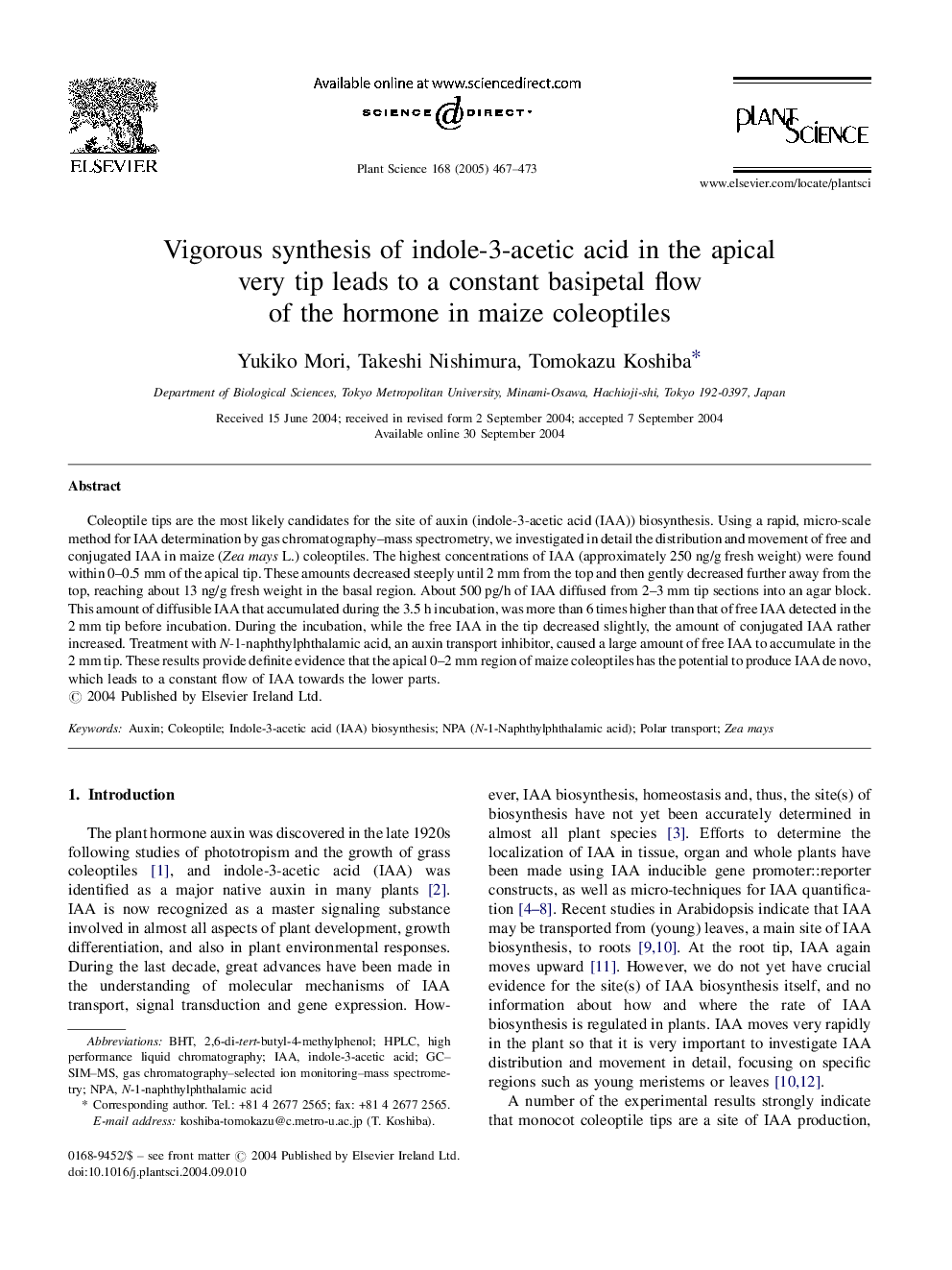| Article ID | Journal | Published Year | Pages | File Type |
|---|---|---|---|---|
| 10840793 | Plant Science | 2005 | 7 Pages |
Abstract
Coleoptile tips are the most likely candidates for the site of auxin (indole-3-acetic acid (IAA)) biosynthesis. Using a rapid, micro-scale method for IAA determination by gas chromatography-mass spectrometry, we investigated in detail the distribution and movement of free and conjugated IAA in maize (Zea mays L.) coleoptiles. The highest concentrations of IAA (approximately 250Â ng/g fresh weight) were found within 0-0.5Â mm of the apical tip. These amounts decreased steeply until 2Â mm from the top and then gently decreased further away from the top, reaching about 13Â ng/g fresh weight in the basal region. About 500Â pg/h of IAA diffused from 2-3Â mm tip sections into an agar block. This amount of diffusible IAA that accumulated during the 3.5Â h incubation, was more than 6 times higher than that of free IAA detected in the 2Â mm tip before incubation. During the incubation, while the free IAA in the tip decreased slightly, the amount of conjugated IAA rather increased. Treatment with N-1-naphthylphthalamic acid, an auxin transport inhibitor, caused a large amount of free IAA to accumulate in the 2Â mm tip. These results provide definite evidence that the apical 0-2Â mm region of maize coleoptiles has the potential to produce IAA de novo, which leads to a constant flow of IAA towards the lower parts.
Keywords
Related Topics
Life Sciences
Agricultural and Biological Sciences
Plant Science
Authors
Yukiko Mori, Takeshi Nishimura, Tomokazu Koshiba,
